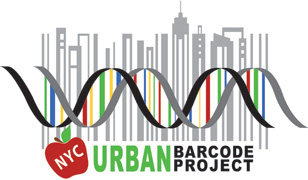 NEWS
NEWS
High School students spend 3 weeks performing top science
Press release
- 41 high school students will run their own experiments at the CRG to improve their research experience and work on their "treball de recerca".
- Activities are planned in collaboration with different institutions like the Cold Spring Harbour Laboratory and Fundació Catalunya - La Pedrera.
Barcelona, 04th of July 20. They wanted to know more and keep learning during the summer. 41 students, from more than 25 institutions from Barcelona and Catalunya, are attending the CRG to perform science research on genetics and molecular biology. The activities are conducted by CRG investigators and outreach staff.
We offer them a life experience from inside a real scientific laboratory. It is not merely a technical and theoretical approach to scientific research but a live experience with real planning, development and results.
The CRG Science & Society program organize and develop a wide array of outreach activities for the general public, and it also collaborates with other programs like "Programa Joves i Ciència", from the Fundació Catalunya-La Pedrera, with the main objective of identifying and supporting young talented students with a special interest on science.
In order to attract the student’s interest, we made a previous work with schoolteachers. They attended the 20 hours course on advanced genomic techniques organized by the CRG, within the framework of "Professors i Ciència", a program also from Fundació Catalunya-La Pedrera. The idea was to provide teachers with an overview of current biomedical science as well as resources and skills to use in the classroom. After that, teachers selected the students and supported them in the application.
Now at the CRG, students from Barcelona and Catalunya schools are spending their holidays (until the 18th of July) performing their research school assignment. With the support of the outreach staff and researchers from the centre, they are preparing the samples and performing experiments (like genome sequencing, "DNA barcoding", bioinformatics, etc).

One of the activities we'll perform with the students is the project "DNA Barcoding". Like a barcode in any store that identifies any type of product, a DNA barcode is a sequence of DNA that identifies each unique living species. The project is based on the Urban Barcode Project (UBP), an initiative from Cold Spring Harbour Laboratory in New York (USA).
The CRG has been collaborating with them in order to teach DNA sequencing principles using several techniques: the Sanger method for sequencing DNA (created in 1977 by Frederick Sanger, two times Nobel Prize winner), electrophoresis gels, PCR Amplification, and genome sequencing using Next Generation sequencing technologies. The use of this protocol is a powerful tool to teach techniques and theoretical foundations of DNA sequencing to young students.
All the experiments take place at the "CRG Teaching and Training lab", a facility inaugurated last year to run training, outreach and teaching activities to both in-house scientist and general public. It houses state-of-the-art equipment, which was donated by several companies related to research. This facility opens a new way of communication between the CRG and society, bringing the science carried out by researchers at the institute closer to the general public.
With this in mind, the CRG, the participant schools, institutions and funding partners expect to raise the interest in science into the youngsters. We all believe this outreach experiences are key to develop a growing interest in science by society.
A story of science engagement
Oriol Pich is in his 4th year of medical school at the Hospital Clinic, UB. At the same time, he is also a researcher in Fyodor Kondrashov’s lab. But his first encounter with science took place in 2008, at the summer science school organised by the Fundació Catalunya La Pedrera. He was only 16 then, and the program taught by CRG researchers at the science camp at the Pyrenees, got him hooked.
The next year he had the opportunity to spend a month at the CRG doing science. From amongst the different projects, Oriol chose the one presented by Fyodor Kondrashov, group leader at the CRG, which consisted of studying compensatory evolution in proteins. He chose that project because he got along with Fyodor, the project interested him, and as he did not know anything about bioinformatics, it was challenge for him to try something new.
In 2010, he was selected to participate in the Rockefeller University’s Summer Science Outreach Program in New York. After that, he began his university studies at the Hospital Clinic, while at the same time he continued collaborating with Fyodor’s lab whenever he had the time. He was hired as a part-time employee in 2013, and since then he has been combining his medical studies with the research. Oriol is studying the long-term effects of protein evolution after gene duplication, and now he submitted his first paper to the journal Genome Biology and Evolution (still under review).
Sponsors of the Teaching & Training Lab:
| Agilent | Invitrogen | Nirco |
| Biorad | Izasa / Werfen | Panreac |
| Cultek | Leica Microsystems | Promega |
| Eppendorf | Life Tech | Tecan |
| Fisher (Thermo) | LineaLab | Telstar |
| Grupo Taper | Mettler-Toledo | VWR |
With the collaboration of:
- Barcelona City Council
- Generalitat de Catalunya
- Consell de Coordinació Pedagògica
- PRBB
For further information:
Juan Sarasua
Press Officer - Centre for Genomic Regulation - CRG
juan.sarasua@crg.eu






